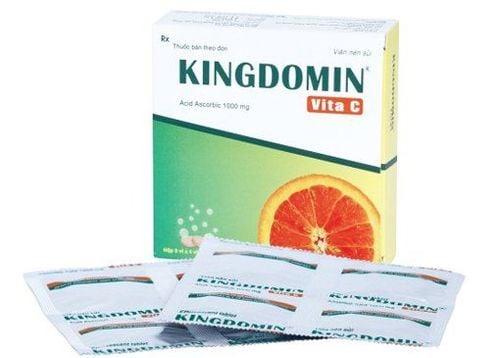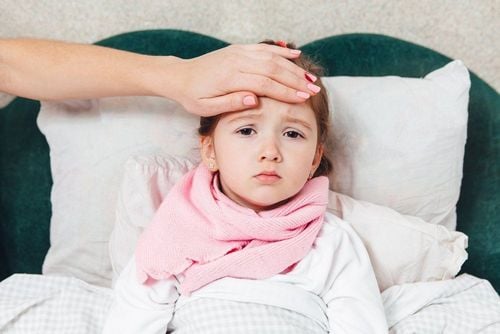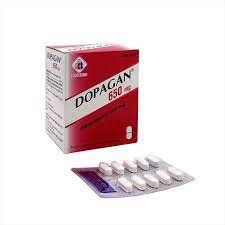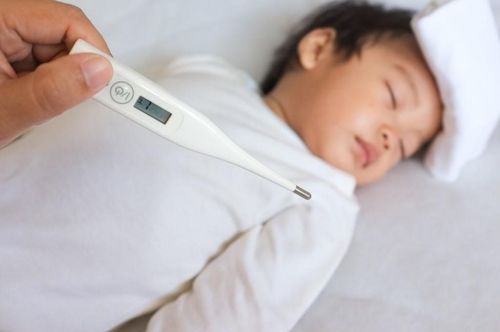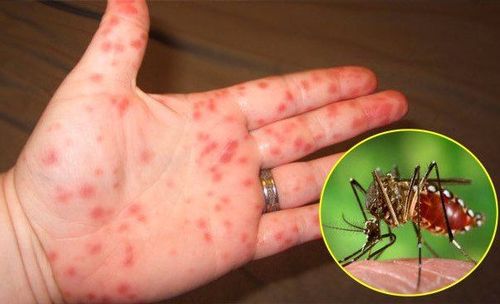This is an automatically translated article.
The article was professionally consulted by Senior Doctor, Dr. Vu Van Tam - Infectious Internal Medicine Doctor - Department of Medical Examination and Internal Medicine - Vinmec Ha Long International HospitalViral fever is a general term for fevers caused by infection with different viruses. Most viral fevers are not dangerous and clear up on their own within a few days. However, there are also some cases where the disease progresses rapidly, the patient needs to be hospitalized for monitoring, if the delay can lead to death, especially in children. The following article will provide basic information about this disease.
1. What is viral fever?
Viral fever, also known as viral fever, is a fever caused by infection with different viruses (viruses). This is an acute disease, common in children and the elderly due to weak immune systems.Viruses have a simple structure and are much smaller in size than bacteria. Viruses cannot live long in the external environment, they must enter the body of humans or animals, using the host's materials to grow, reproduce and cause disease.
There are many viruses that are the cause of viral fever, of which the most typical are Rhinovirus, Adenovirus, Coronavirus, Enterovirus, Influenza virus, ... depending on the type of virus infected, causes other diseases. together. However, there are many different viruses that can cause similar symptoms.
Viral fever is common at the time of season change, when the weather changes suddenly, creating favorable conditions for the virus to develop and cause disease. The disease usually lasts from 7 to 10 days and usually goes away on its own, when treated actively, the disease will quickly improve. However, people should not be subjective, because some cases of the disease progress quickly, if not treated promptly and properly, it can lead to dangerous complications.
Trắc nghiệm: Bạn có phân biệt được chính xác cảm lạnh và cúm mùa?
Cảm cúm và cảm lạnh là hai khái niệm mà chúng ta thường đánh đồng nó giống nhau, không phân biệt rõ ràng. Dưới đây là một số câu hỏi trắc nghiệm, giúp bạn có thêm những kiến thức phân biệt cảm lạnh và cảm cúm. Từ đó, có những biện pháp điều trị bệnh phù hợp.2. Is viral fever contagious? If yes, by which way?
Viral fever can be spread from person to person. Therefore, when adults are sick, children should not be contacted, especially infants. When children have a fever, it is necessary to keep them off school and not go to crowded places so as not to spread the disease to others.
Viral fever is mainly transmitted through the respiratory and gastrointestinal tract, through activities such as communication, eating, direct contact with saliva or nasal secretions of the patient. Most viruses are transmitted through secretions that are released when talking, sneezing, coughing, or runny nose. Because of that, the virus can spread and break out into an epidemic quickly.
In addition, the disease can be transmitted indirectly through objects in public places such as doorknobs, stair handrails, or toy handles for children. These items can be contaminated with secretions containing disease-causing viruses, when we accidentally touch them, they will be infected.
There are a small number of viruses that are transmitted through blood through injections, blood transfusions, sexual contact, or from a mother to her baby during childbirth.
3. Symptoms of viral fever in children
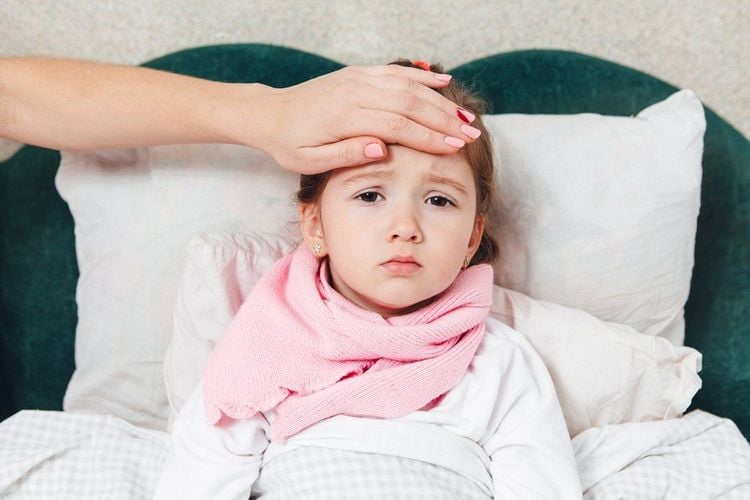
Sốt siêu vi ở trẻ em có biểu hiện như thế nào?
When a child has a viral fever, they will have common symptoms such as:
Fever, which can be mild or high to 39 - 40 degrees Celsius, fever can last continuously or intermittently. Cough, sneezing, runny nose, stuffy nose, runny nose. Tired people, anorexia. With young children, they will often cry a lot, stop sucking. Older children often complain of headaches, pain in the temples and back of the neck. In addition to the above general symptoms, depending on the type of virus that the child is infected with, there will be other specific symptoms such as:
The child has watery eyes, red eyes, discharge and sensitivity to light. Children have abdominal pain, nausea, vomiting, diarrhea. Children may have nosebleeds, bleeding gums, skin bleeding, etc. Children may have a rash or blisters. The rash usually appears after the fever has subsided, at the beginning of recovery. Parents need to pay attention to monitor the progress of the child's illness, take the child to the doctor as soon as the following signs appear:
The child has a high fever continuously for more than 2 days, accompanied by unusual shivering, cold limbs. Children appear to be lethargic or sleep a lot, difficult to wake up. Children appear pale, tired breathing. A rash all over the child's body. Children have abdominal pain, vomiting a lot. Passing blood or black stools. Children are often startled and panicked.
4. How to care and monitor children with viral fever at home
So far, viral fever has no specific treatment, mainly treating symptoms, improving physical condition, strengthening resistance and preventing complications.
It is necessary to check the child's body temperature regularly. When the child has a high fever over 38 degrees Celsius, use antipyretic drugs according to the doctor's instructions, such as Paracetamol at a dose of 10-15mg/kg/time, 4-6 hours apart.
Let the child rest in a quiet, cool room. Wear cool, sweat-wicking clothing. Parents use a warm towel wringed out the water to wipe the child's body, paying attention to the armpit and groin area.
When children have high fever, they will lose water and electrolyte disorders, so they need to drink lots of water and replace electrolytes with Oresol, drink instead of water during the day. Give your child foods that are liquid, easy to swallow and easy to digest, such as soups and porridges. Children should not be forced to eat too much in one meal, but should divide them into many small meals during the day. At the same time, let children drink more fruit juices containing a lot of vitamin C such as orange juice to strengthen children's resistance.

Thuốc kháng sinh không phải là thuốc điều trị sốt siêu vi
Antibiotics only work against bacteria, not viruses. Therefore, do not use antibiotics to treat viral fever if there is no superinfection.
Parents need to closely monitor their children, when children have any abnormal symptoms, they need to take them to medical facilities for examination and treatment to avoid dangerous complications.
5. Measures to prevent viral fever
Everyone knows that prevention is better than cure, so how can viral fever be prevented, especially for children? To prevent viral fever, people need to do the following things:
Follow a nutritious and scientific diet to improve the body's health and resistance. Regularly clean the house as well as the surrounding environment to keep it clean and cool, preventing the penetration and development of pathogens. Everyone needs to maintain personal hygiene, wash their hands before eating and after using the toilet. For children, it is necessary to limit the amount of toys that children put in their mouths. Everyone, especially children, needs to be fully vaccinated. Should not come into contact with people who are sick, should not go to crowded places when there is an epidemic circulating. When sneezing, coughing or having a runny nose, everyone should use a tissue or cover their mouth with their hands. Adults also need to guide young children to do this. Anyone who has a viral fever, especially a child, needs to go to a medical facility to be examined by a doctor and given an appropriate treatment plan. For mild cases, doctors can treat and monitor them at home, not necessarily in the hospital.
Please dial HOTLINE for more information or register for an appointment HERE. Download MyVinmec app to make appointments faster and to manage your bookings easily.





